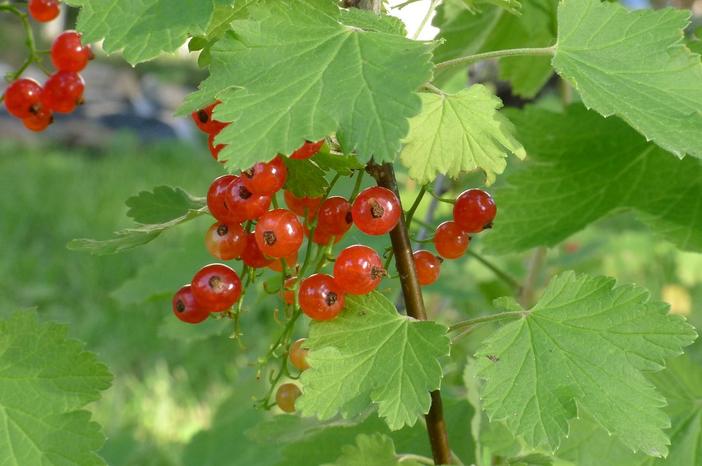Red Currant
(Ribes rubrum)
Red Currant (Ribes rubrum)
/
/

Alvin Kho
CC BY-SA 2.0















































































Estimated Native Range
Summary
Red Currant bushes are valued for their ease of maintenance and the ornamental quality of their fruit. They are commonly used in gardens for their attractive berries and as a source of food for wildlife. In cultivation, they perform best in full sun to part shade and are adaptable to a wide range of soil conditions, from slow to fast drainage. While they can tolerate various soil types, they prefer moist, well-drained soil. Red Currants are also used in culinary applications, often in jellies, sauces, and baked goods. However, gardeners should be aware that Ribes rubrum can be potentially invasive in some regions outside its native range, and its cultivation should be approached with caution to avoid ecological disruption.CC BY-SA 4.0
Plant Description
- Plant Type: Shrub
- Height: 3-5 feet
- Width: 3-5 feet
- Growth Rate: Moderate
- Flower Color: Yellow, Green
- Flowering Season: Spring
- Leaf Retention: Deciduous
Growth Requirements
- Sun: Full Sun, Part Shade
- Water: Medium
- Drainage: Slow, Medium, Fast
Common Uses
Bee Garden, Bird Garden, Butterfly Garden, Deer Resistant, Edible*Disclaimer: Easyscape's listed plant edibility is for informational use. Always verify the safety and proper identification of any plant before consumption., Fragrant, Hummingbird Garden, Low Maintenance, Rabbit Resistant, Street Planting
Natural Habitat
Temperate forest understories, hedgerows, and scrub areas in Western Europe
Other Names
Common Names: Redcurrant, European Red Currant, Cultivated Currant, Cultivated Red Currant, Garden Red Currant, Northern Red Currant, Red Garden Currant, Garden Currant, Common Currant, White Currant
Scientific Names: , Ribes rubrum, Ribes sativum, Ribes vulgare, Ribes acidum, Ribes rubrum subsp. rubrum, Ribes sylvestre, Ribes hortense, Ribes glabrum, Ribes rubrum var. sativum
GBIF Accepted Name: Ribes rubrum L.